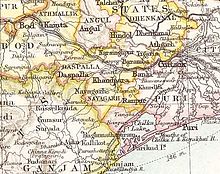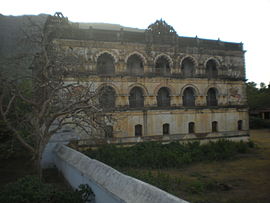| Ranpur State | |||||||
|---|---|---|---|---|---|---|---|
| Princely State of British India | |||||||
| 17th cen–1948 | |||||||
 Ranpur State in the Imperial Gazetteer of India | |||||||
| Area | |||||||
| • Coordinates | 20°03′46″N85°20′38″E / 20.062646°N 85.343878°E | ||||||
• 1931 | 526 km2 (203 sq mi) | ||||||
| Population | |||||||
• 1931 | 47,711 | ||||||
| History | |||||||
• Established | 17th cen | ||||||
| 1948 | |||||||
| |||||||

Ranpur State was one of many small princely non-salute states of India during the period of the British Raj. It was one of the four native states located in present-day Nayagarh district, Odisha.
Contents
The state was bounded in the west by Nayagarh State and in all other directions by Puri district. It was very close to the seashore but had no coastline. Its southwestern part was thickly forested and was mostly uninhabited. The Ranpur ruling family claimed descent from the most ancient lineage of the princely rulers of the Orissa Tributary States. The capital of the state was Ranpur, a small town near Kalupara Ghat railway station where the Raja resided. [1] [2]